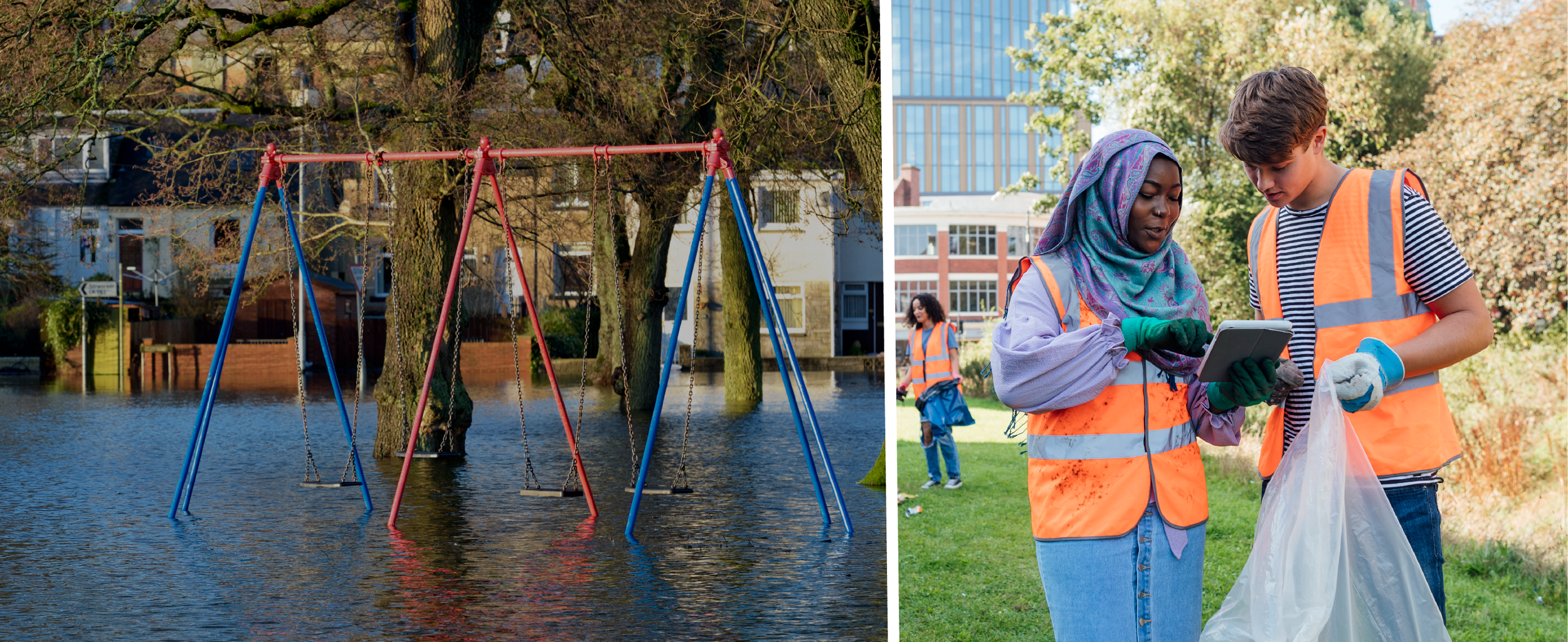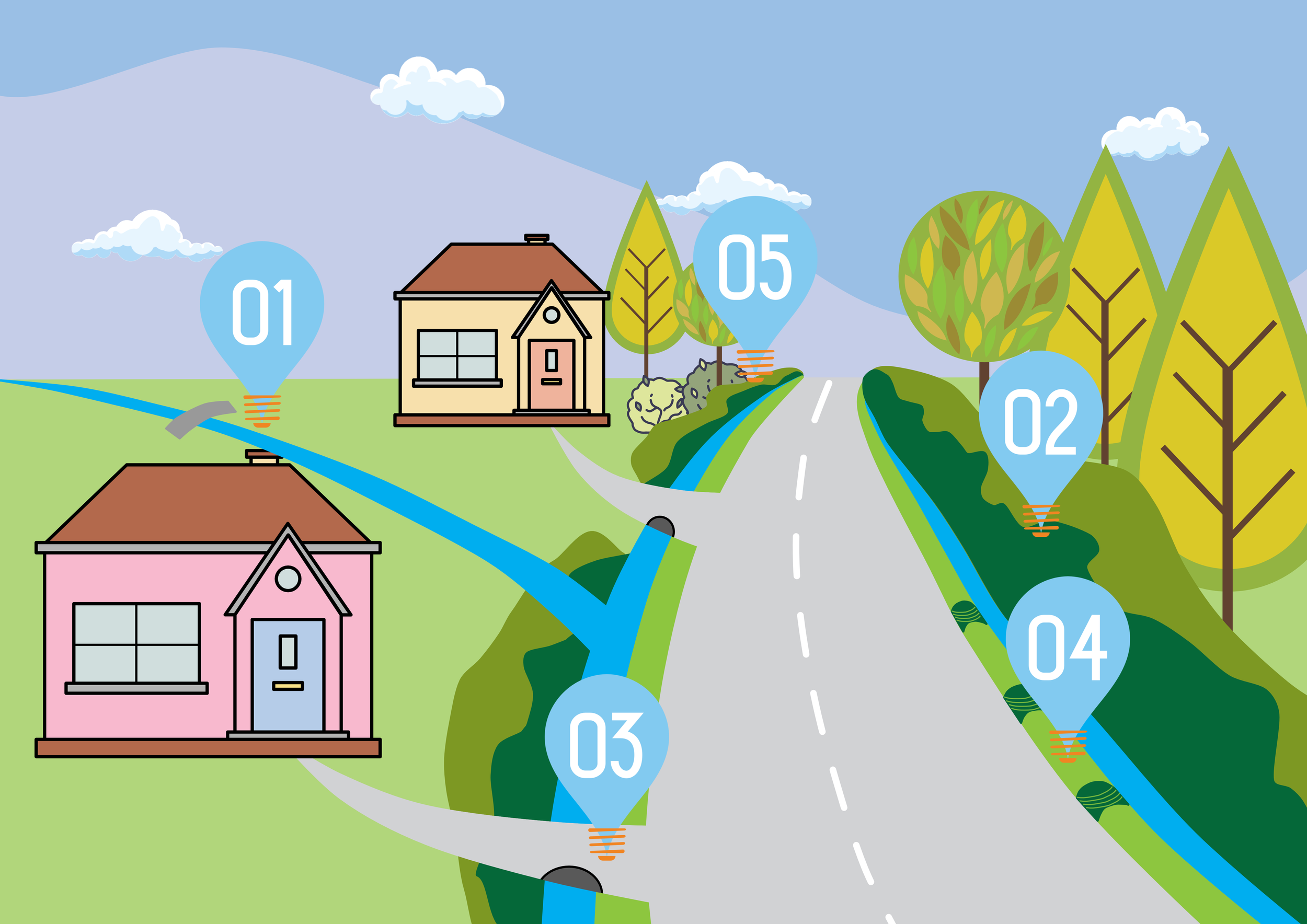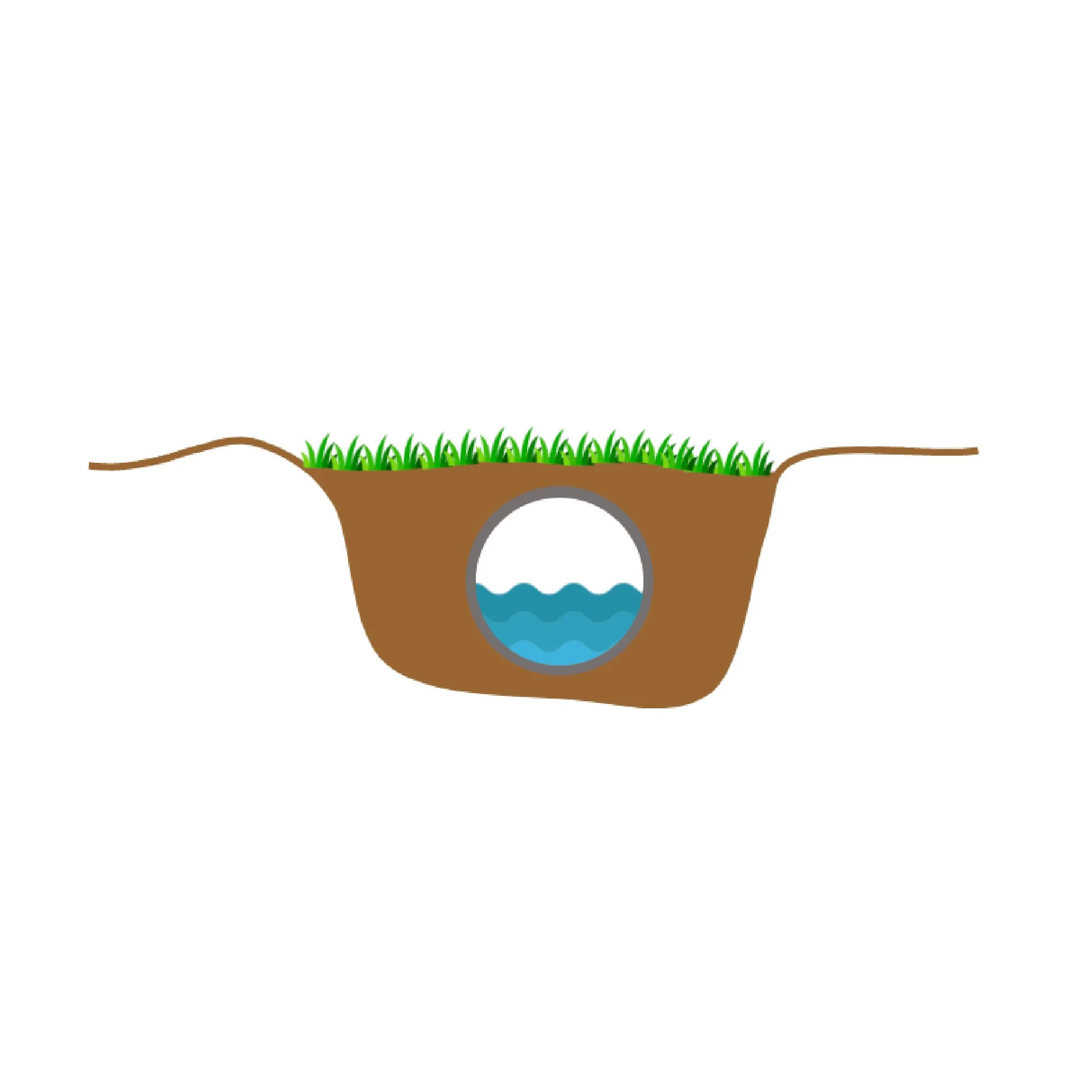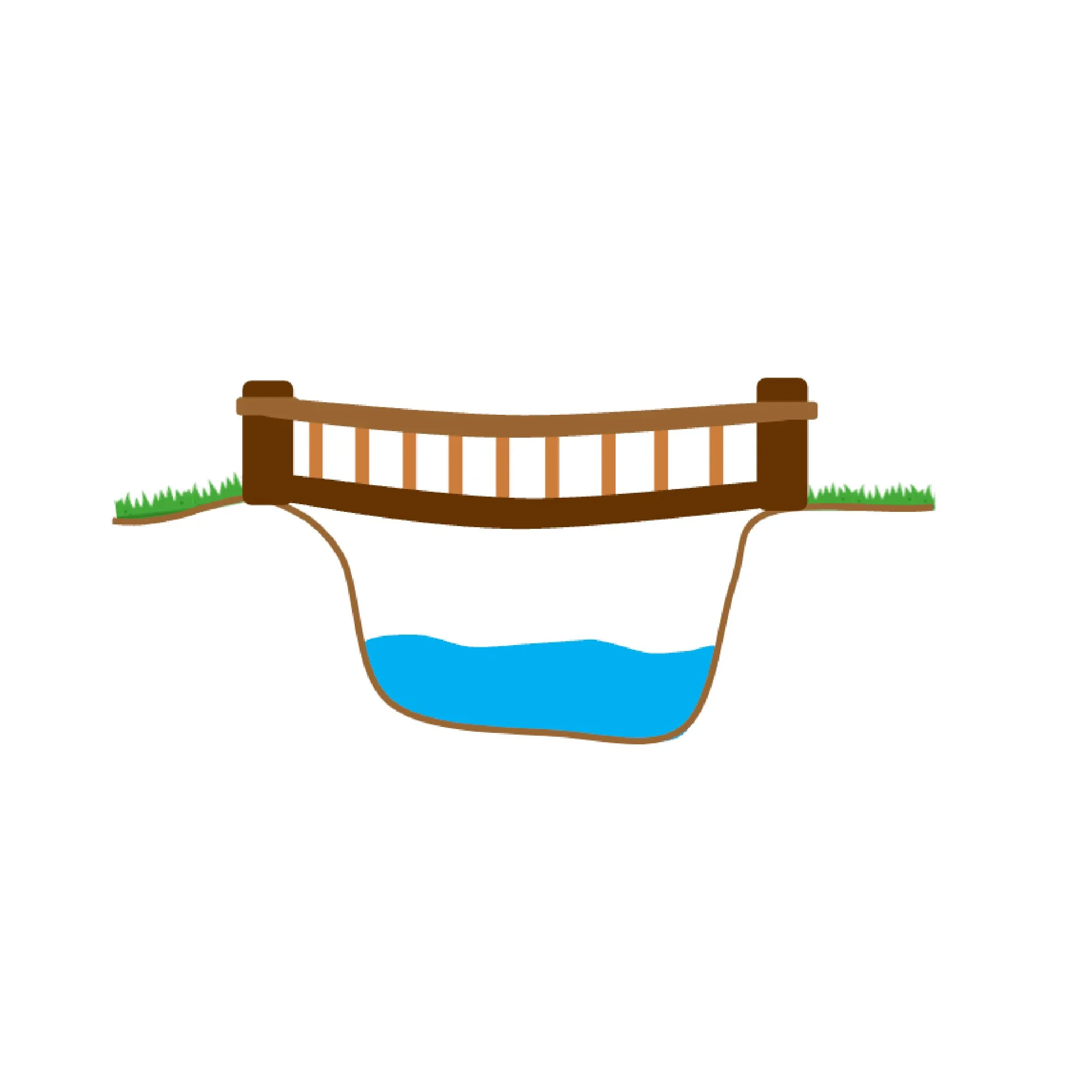
A GUIDE TO
RIPARIAN OWNERSHIP
rESPONSIBILITIES AND TIPS
TO KEEP THINGS FLOWING
Who is a riparian owner?
Anyone who has a watercourse on, next to or under their property is a riparian owner.
Roadside ditches and watercourses are usually the responsibility of the adjacent landowner, though highway verges and grips are the responsibility of the highway authority.
Landowner for both banks of a watercourse
If you own the land on both sides of a watercourse you are fully responsible for the maintenance of the watercourse.
Landowner on one bank
If you’re the closest landowner to the bank of a watercourse you are usually responsible for its maintenance up to the centre line. This is still the case even if the watercourse doesn’t fall within your boundary on the deeds or if there is a fence or bushes between your land and the watercourse.
1. When a ditch does not fall within the boundary of a property the landowners either side have shared responsibility
2. Roadside trees and bushes are the responsibility of the adjacent landowner
3. A piped ditch is the responsibility of the adjacent landowner
4. Highway verges and grips are the responsibility of the highway authority
5. Roadside ditches and watercourses are the responsibility of the adjacent landowner
riparian RIGHTS AND RESPONSIBILITIES
As a riparian owner you have responsibility to ‘accept flow and pass it on’
in essence, keep the water moving!
If the watercourse is along the boundary of your property it is normally your responsibility to maintain it from the top of the bank up to the centre line. Regular maintenance helps keep water flowing as it should and keeps the capacity of the watercourse high, reducing flood risk locally. Working with your neighbours can be a good way to clear watercourses quickly.
How DO you look after your watercourse?
As a riparian owner you should…
Remove invasive species
Not obstruct free passage of fish
Maintain the bed and banks of the watercourse
Keep structures you own clear, such as culverts, trash screens, weirs and mill gates
Protect your property from seepage through natural or manmade banks
Not use the watercourse and the banks for the disposal of garden or other waste.
Clear debris from the watercourse such as rubbish and fallen branches
Prevent obstruction or pollution
Ditches, culverts and other watercourses are designed to transport and/or store surface water. These help control water levels in the area and prevent properties being put at risk. If the system of watercourses is well maintained flooding is likely to only affect the flood plain areas.
It’s important to note that not all watercourses transport water, some are purely for storage. Maintaining the capacity of these features is important as they prevent flood water going elsewhere.
The cost of maintaining a watercourse is minor in comparison to the cost of damages from a flood. Additionally, there is the distress and inconvenience caused by a flooded property.
If a landowner fails to carry out their riparian responsibilities and a flood occurs as a direct result, the landowner may be liable for compensating any resulting damages.
FREQUENTLY ASKED QUESTIONS







